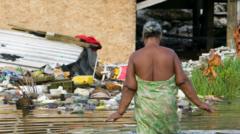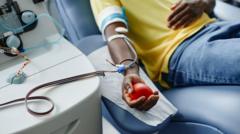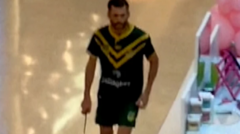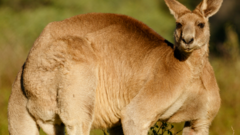Australia's notorious wildlife, including venomous snakes and spiders, plays a pivotal role in saving lives through an effective antivenom program. Notably, the Sydney funnel-web spider, one of the most lethal arachnids, is milked for its venom which is pivotal for creating life-saving antidotes. With a robust public engagement strategy, Australians are encouraged to safely capture these spiders instead of killing them, assuring that no fatalities from funnel-web bites have occurred since the program's inception. Meanwhile, Australian Reptile Park staff meticulously collect snake venom, contributing to a proactive response system that extends even to neighboring nations.
**Venom's Gift: How Australia's Most Dangerous Creatures Help Save Lives**
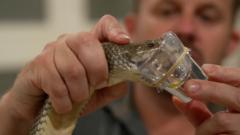
**Venom's Gift: How Australia's Most Dangerous Creatures Help Save Lives**
Antivenom programs leverage deadly spiders and snakes to combat fatalities in Australia.
The poison paradox: How Australia's deadliest animals save lives
Just nowShareSaveKaty WatsonAustralia correspondentReporting fromSydney
With a pair of bright pink tweezers in hand, Emma Teni is delicately wrestling a large and leggy spider in a small plastic pot. "He's posing," the spider-keeper jests as it rears up on its back legs, which is exactly what she's trying to achieve. This way, she can suck the venom from its fangs using a small pipette. Emma works from a tiny office known as the spider milking room. On a typical day, she milks the venom from 80 Sydney funnel-web spiders.
On three of the four walls are floor-to-ceiling shelves stacked full of the arachnids, with a black curtain pulled across to keep them calm. The remaining wall is a window through which a small child stares, both fascinated and horrified, as Ms. Teni works. Little do they know that the palm-sized spider she's handling could kill them in a matter of minutes. "Sydney funnel-webs are arguably the most deadly spider in the world," Emma says matter-of-factly.
Australia is notoriously full of dangerous animals, and this room at the Australian Reptile Park is critical for the government antivenom program, which saves lives across a continent where it's often joked that everything wants to kill you. While the quickest recorded death from a Sydney funnel-web spider was that of a toddler at 13 minutes, the average is closer to 76 minutes, and first aid gives an even better chance of survival.
So successful is the antivenom program at the Australian Reptile Park that no one has died from a funnel-web bite since it started in 1981. The initiative relies on the public catching the spiders or collecting their egg sacs. In a van plastered with a giant crocodile sticker, Ms. Teni's team travels throughout Sydney, picking up spiders handed in at veterinary practices and other drop-off points.
The urgency for intervention is emphasized by handyman Charlie Simpson, who found two funnel-webs in his garden shortly after moving into his home. Despite his initial fear, he captured one of the spiders to ensure it could be milked, underscoring the importance of public participation. "This is curing my fear of spiders," he jokes, highlighting the dual role of the initiative in reducing risks and educating the community.
Emma urges caution, stating, "We're not telling Australians to go looking for the spiders and throw themselves into danger." Instead, they should capture and safely transport them. Each spider collected boosts the effectiveness of venom extraction, which is crucial for creating antivenom. Adult males, six to seven times more toxic than females, are prioritized for milking, while females are considered for breeding programs to maintain spider populations.
Using a pipette attached to a suction hose, Emma extracts the venom efficiently, noting that it takes approximately 200 venom extractions to fill one vial of antivenom. This vital process reflects her passion for arachnids, earning her the playful monikers of "spider girl" and "spider mama."
However, spiders represent only a fraction of what the Australian Reptile Park does; they also provide snake venom for antivenoms. Globally, snake bites lead to around 140,000 fatalities each year, while Australia experiences one to four deaths annually thanks to its effective antivenom program.
Billy Collett, park operations manager, collects venom from a King Brown snake, validating the potency of these creatures. "They just want to be left alone," he reassures, clarifying that bites often occur when people provoke or attempt to kill snakes. Following extraction, snake venom is freeze-dried and sent to Melbourne's CSL Seqirus for antivenom production, a process involving the immunization of larger animals like horses.
Each year, CSL Seqirus produces around 7,000 vials of antivenom for various species, aiming to deliver supplies to remote areas through collaborations with organizations like the Royal Flying Doctors. Interestingly, the Australian government provides antivenoms to Papua New Guinea under "snake diplomacy," as many shared species contribute to safety and health.
"This is everyone's best chance if you get bitten by a snake," Collett notes lightheartedly, reminding the public that while Australia presents risks, its comprehensive antivenom strategy means that should venomous encounters occur, help is close at hand.
Just nowShareSaveKaty WatsonAustralia correspondentReporting fromSydney
With a pair of bright pink tweezers in hand, Emma Teni is delicately wrestling a large and leggy spider in a small plastic pot. "He's posing," the spider-keeper jests as it rears up on its back legs, which is exactly what she's trying to achieve. This way, she can suck the venom from its fangs using a small pipette. Emma works from a tiny office known as the spider milking room. On a typical day, she milks the venom from 80 Sydney funnel-web spiders.
On three of the four walls are floor-to-ceiling shelves stacked full of the arachnids, with a black curtain pulled across to keep them calm. The remaining wall is a window through which a small child stares, both fascinated and horrified, as Ms. Teni works. Little do they know that the palm-sized spider she's handling could kill them in a matter of minutes. "Sydney funnel-webs are arguably the most deadly spider in the world," Emma says matter-of-factly.
Australia is notoriously full of dangerous animals, and this room at the Australian Reptile Park is critical for the government antivenom program, which saves lives across a continent where it's often joked that everything wants to kill you. While the quickest recorded death from a Sydney funnel-web spider was that of a toddler at 13 minutes, the average is closer to 76 minutes, and first aid gives an even better chance of survival.
So successful is the antivenom program at the Australian Reptile Park that no one has died from a funnel-web bite since it started in 1981. The initiative relies on the public catching the spiders or collecting their egg sacs. In a van plastered with a giant crocodile sticker, Ms. Teni's team travels throughout Sydney, picking up spiders handed in at veterinary practices and other drop-off points.
The urgency for intervention is emphasized by handyman Charlie Simpson, who found two funnel-webs in his garden shortly after moving into his home. Despite his initial fear, he captured one of the spiders to ensure it could be milked, underscoring the importance of public participation. "This is curing my fear of spiders," he jokes, highlighting the dual role of the initiative in reducing risks and educating the community.
Emma urges caution, stating, "We're not telling Australians to go looking for the spiders and throw themselves into danger." Instead, they should capture and safely transport them. Each spider collected boosts the effectiveness of venom extraction, which is crucial for creating antivenom. Adult males, six to seven times more toxic than females, are prioritized for milking, while females are considered for breeding programs to maintain spider populations.
Using a pipette attached to a suction hose, Emma extracts the venom efficiently, noting that it takes approximately 200 venom extractions to fill one vial of antivenom. This vital process reflects her passion for arachnids, earning her the playful monikers of "spider girl" and "spider mama."
However, spiders represent only a fraction of what the Australian Reptile Park does; they also provide snake venom for antivenoms. Globally, snake bites lead to around 140,000 fatalities each year, while Australia experiences one to four deaths annually thanks to its effective antivenom program.
Billy Collett, park operations manager, collects venom from a King Brown snake, validating the potency of these creatures. "They just want to be left alone," he reassures, clarifying that bites often occur when people provoke or attempt to kill snakes. Following extraction, snake venom is freeze-dried and sent to Melbourne's CSL Seqirus for antivenom production, a process involving the immunization of larger animals like horses.
Each year, CSL Seqirus produces around 7,000 vials of antivenom for various species, aiming to deliver supplies to remote areas through collaborations with organizations like the Royal Flying Doctors. Interestingly, the Australian government provides antivenoms to Papua New Guinea under "snake diplomacy," as many shared species contribute to safety and health.
"This is everyone's best chance if you get bitten by a snake," Collett notes lightheartedly, reminding the public that while Australia presents risks, its comprehensive antivenom strategy means that should venomous encounters occur, help is close at hand.



